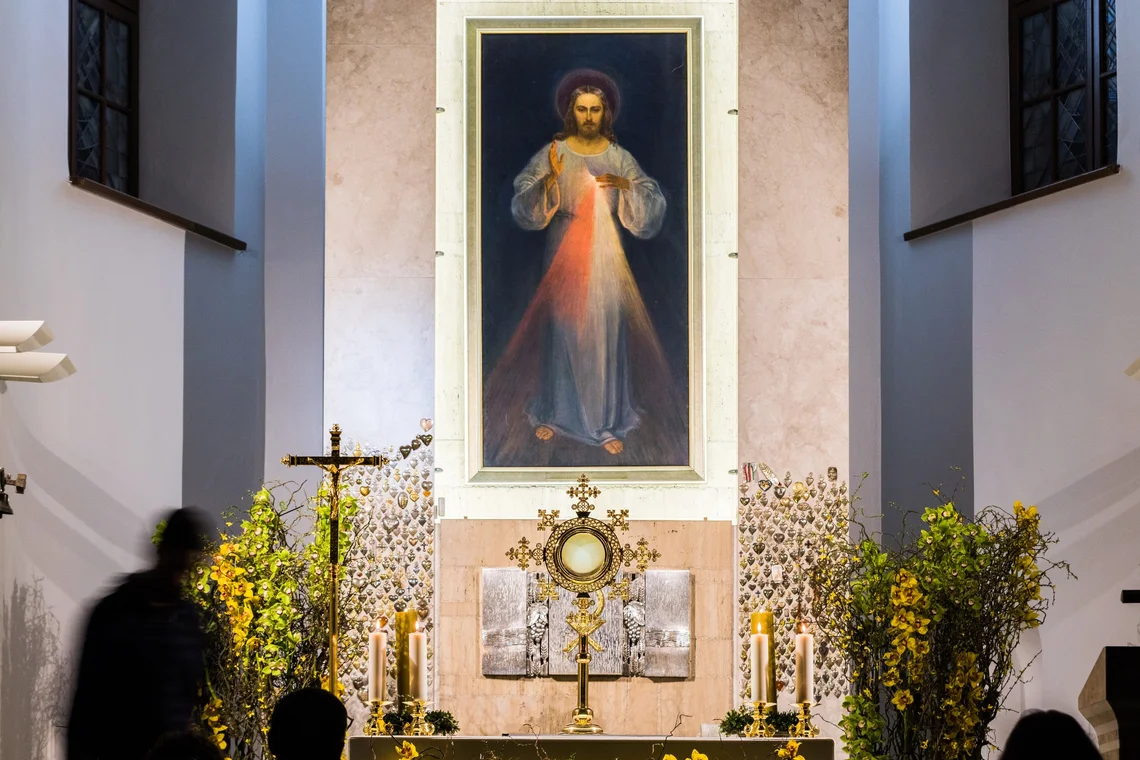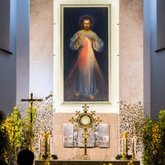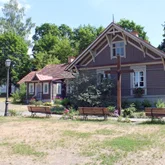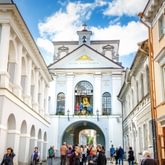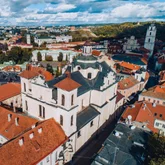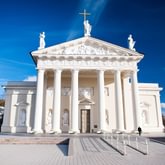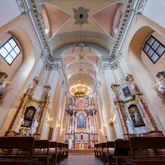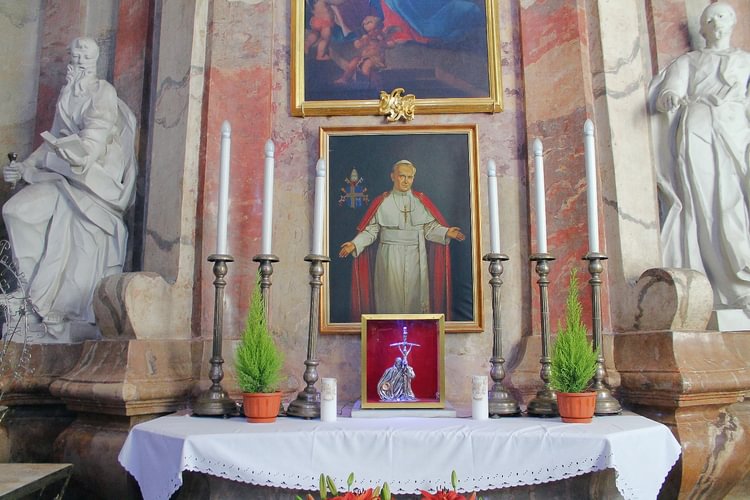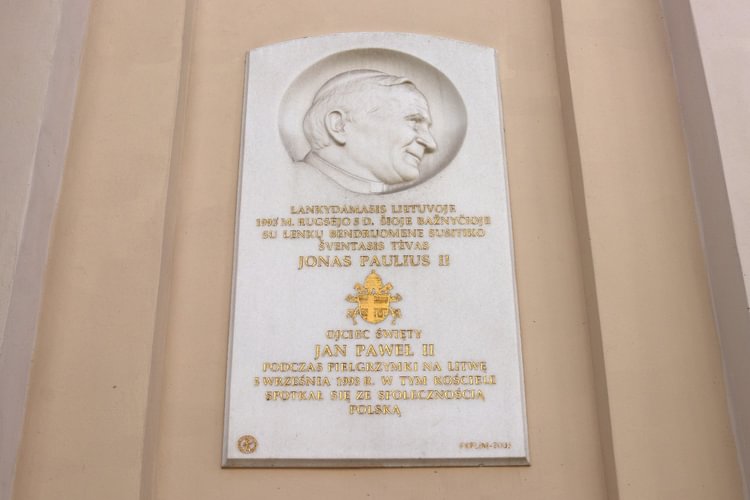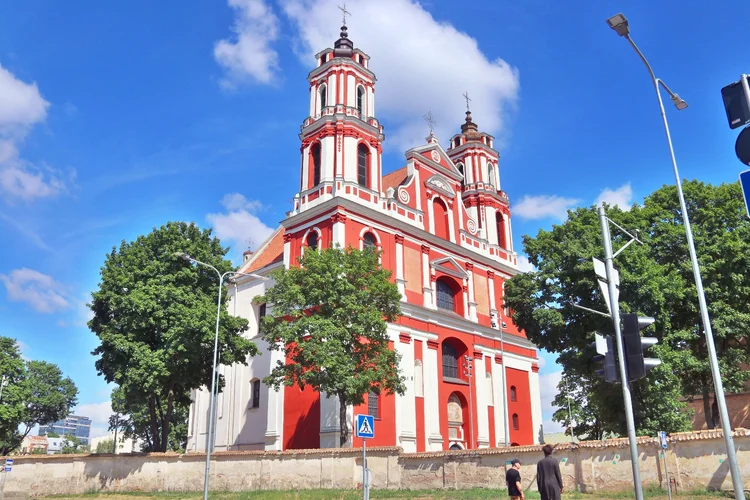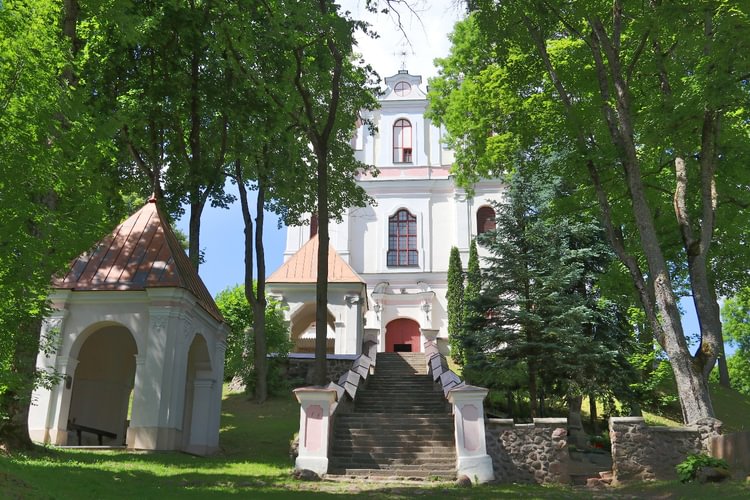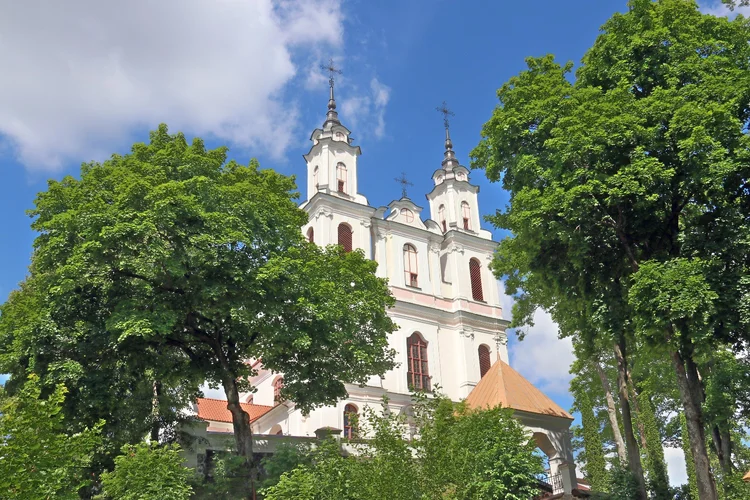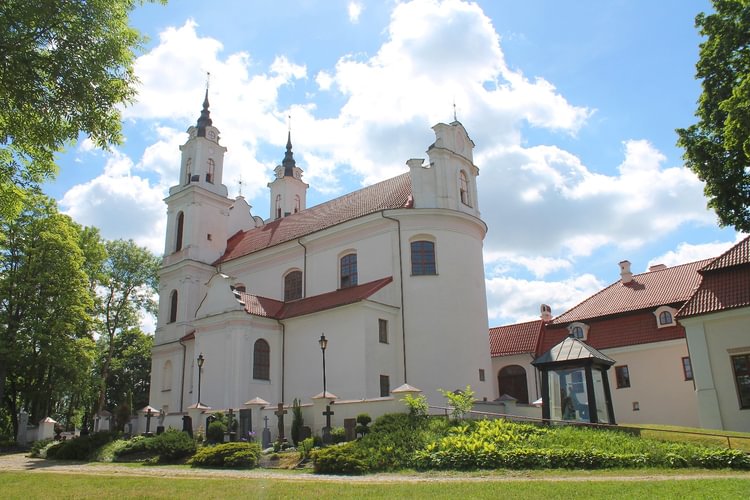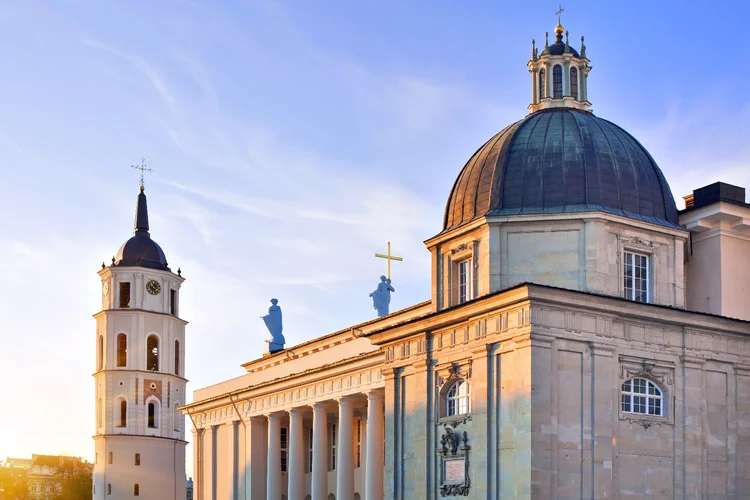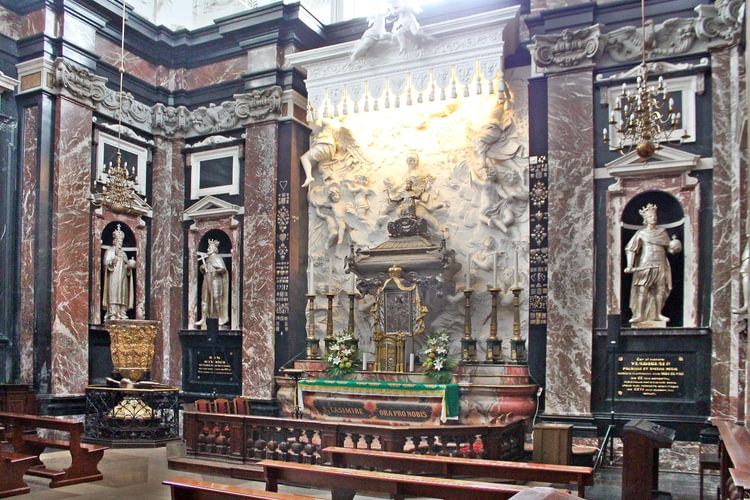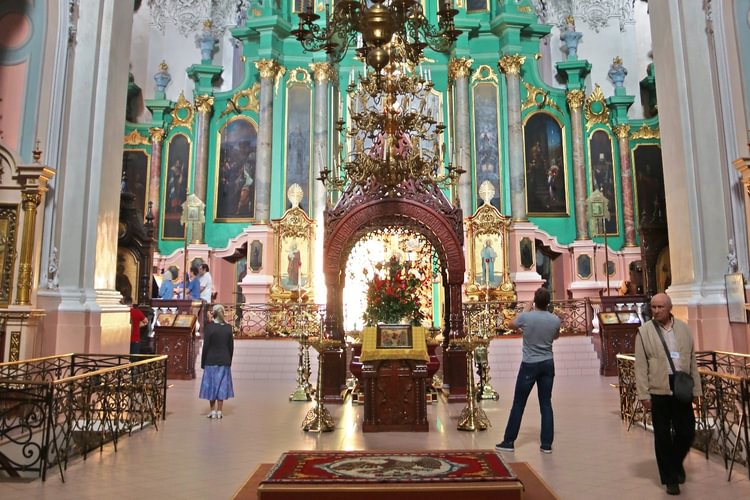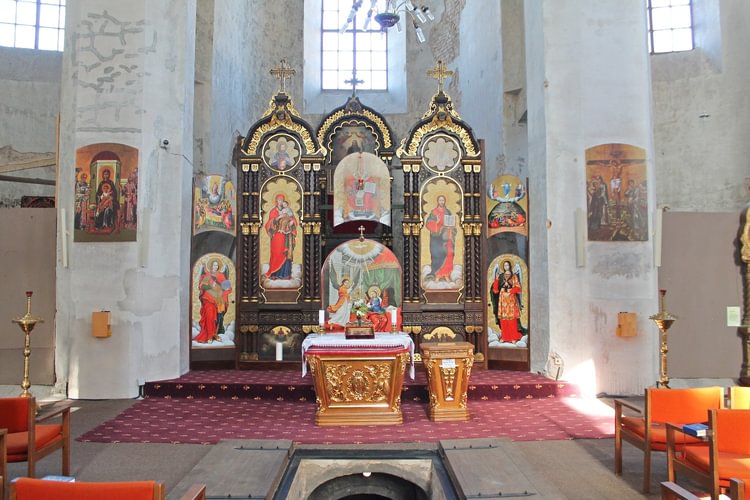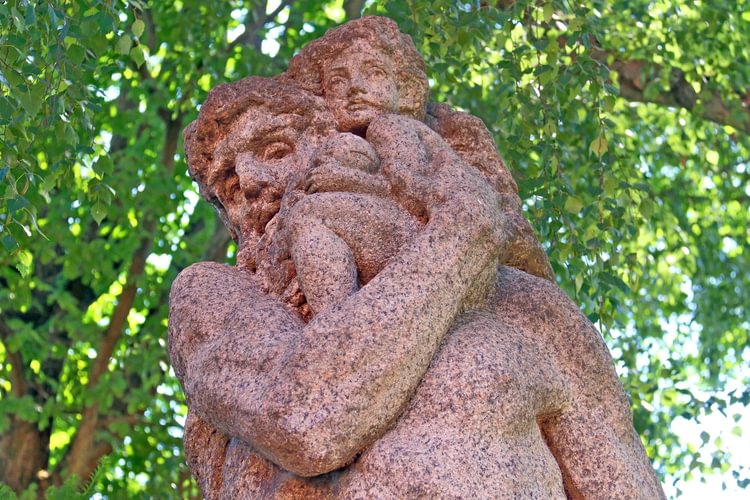Experience a History of Your Own Pilgrimage in Vilnius
Almost all of Lithuania’s history can be told in its churches, so it is no surprise that the country has a deep tradition as a pilgrimage destination. For more than 400 years, pilgrims have been meeting at the painting of the Blessed Virgin Mary at the Gates of Dawn in hopes of receiving Mary’s blessing and help, or even to thank her for the grace she may have already bestowed upon them.
Today, about 30,000 pilgrims from all over the world visit Vilnius annually. The path of Mercy that can be found here begins with the special works of St. Faustina and the Blessed Father St. Michael Sopoćko, who lived in Vilnius and spread the message of God’s Mercy to the world.
The places of interest for pilgrims promote the city through its sacral heritage. Vilnius is special because the main Christian denominations are clearly visible on the narrow streets of the Old Town – there are Catholic, Russian Orthodox, and Lutheran churches, Greek Catholic prayer houses and more.
We invite you to experience Vilnius’ most holy places, feel the Mercy of God, and witness the seven works of mercy for the body and soul. Even a short visit to one or more of these holy places will lighten your spirits and give you hope. Explore Vilnius – a City of Mercy.
Pilgrim Route of St. Pope John Paul II
After Lithuania regained its independence in September 1993, the country’s Catholics were visited by the great pilgrim Pope John Paul II. The Pope’s first visit to Lithuania was used to encourage the adoption of the Gospel as a gift of salvation and an integral part of everyday life. In memory of St John Paul II, a pilgrimage route was established to celebrate and honour the creation of sacred and treasured places from the 14th century in Lithuania.
The route is located in Vilnius and includes visits to the Cathedral and the Chapel of St. Casimir, the Temple of Divine Mercy, the Chapel of the Gates of Dawn and the Church of St. Theresa, the Church of the Finding of the Holy Cross with the Crossroad, and the Church of the Holy Virgin Mary's Visit in Trakai. It is also worth visiting the St. Holy Spirit Church, where the Pope met with the Polish speaking believers; one can honour the relic of St. John Paul II.
The Way of Saint James
Although the most famous of the St. James Way is located in Spain, Lithuania joined the network of pilgrimage roads in 2016, ultimately reflecting the country’s common Christian roots with Europe. Pilgrims can visit 32 St. James places marked with shells and 11 churches of St. James as well as other shrines. Through these ancient, prayer-filled places, each pilgrim can build their own route, as well as track the wooden crosses along the way. The 500-kilometre route across Lithuania, which also spans from Latvia and Russia to the Polish border, is a living social, cultural, and economic organism.
Pilgrim lodging and catering facilities are available at the stops for pilgrims and crusaders. Pilgrims can also visit the objects of St. James Way – the Chapel of the Gates of Dawn, the Church of St. Theresa, the Church of Sts. Philip and Jacob, the Apostles, and the Dominican Monastery.
Calvary way of the Crosses
Start at Pušynas Road 25, the northern part of Vilnius
The origins of the Vilnius Calvary reach as far back as the 14th century, and the Way was built in the 17th century to thank the Lord for the victory over the Cossack army. It is one of the largest complexes of Ways of the Cross in Europe, covering seven kilometres. Just like hundreds of years ago, believers go on walking routes to replicate the road of Christ’s suffering.
During the Pentecost, the hills here are filled with the songs of tearful pilgrims, and during the summer, the secular Franciscans of Vilnius invite believers to reflect on the suffering of Jesus walking along his path on the first Friday of the month at 3 p.m. The Calvary of Vilnius is divided into two parts and reproduces the topography and orientation of Jerusalem so that worshippers, who were unable to visit the Holy Land, could repeat the last trip of Jesus.
The takeup path from the Last Supper Room to the Quarterly Old Town Gateway consists of 20 stations, marked by eight chapels, a bridge along the Cedron stream, one brick and seven wooden gates, and the Way from Pilot Town Hall to Golgotha Hill – and 15 stations marked by 12 masonry chapels and three stations equipped in a church.
It is also possible to go by the Mary's path, which consist of 12 stations and goes in the opposite direction of the road of Christ’s suffering. The Calvary Way of the Cross is included in the way of John Paul II in the Archdiocese of Vilnius.
Saints of Vilnius
St. Casimir – Patron of Lithuania
Observed in the church on 4 March The heavenly patron of Lithuania, the prince of the Grand Duchy of Lithuania and of the Kingdom of Poland was famous for his piety while he was alive, and his grave became a place of worship - believing in his royal holiness, people came here to ask for intercession and to experience grace.
Casimir’s cult was confirmed in 1602, and St. Casimir became the first Lithuanian saint. His remains lie in the most beautiful Chapel of St. Casimir in the Cathedral of Vilnius. It is also worth visiting the Church of St. Casimir, which is the first and oldest Baroque church in Vilnius. Furthermore, Kaziukas Fair takes place in Lithuania on the weekend following St. Casimir's Day (4 March).
The First Christian Martyrs in Vilnius
Observed in the church on 27 April The pagans belonging to the manor house of the Grand Duke of Algirdas, Antanas, Jonas and Eustachijus believed and were baptised by the Orthodox Pastor Nestor. In 1347, they were ordered to denounce their faith and were tortured when they refused to do so. In 1547, the three martyrs were officially proclaimed Orthodox saints.
In 1969, Pope Paul VI included them in the list of Roman Catholic Church saints. Currently, their relics are respected in the Orthodox Church of the Holy Spirit of Vilnius. Every year on 26 June, Orthodox Christians celebrate the transfer of these relics and a special mass is held during which the reliquary is opened. Many believe that the relics belonging to the Orthodox martyrs have healing powers.
Josaphat Kuntsevych
Observed in the church on 12 November Josaphat Kuntsevych began ecumenical work in an attempt to unite the Catholic and Orthodox Churches some 400 years ago. He started his career in Vilnius where he entered the Vilnius Academy, and later became the Archimandrite of the Vilnius Basilicum Monastery.
In Lithuania, as well as being the Archbishop of Polotsk, Josaphat Kuntsevych actively defended and asserted the Orthodox communities and re-established unity with Rome. He was killed for the active unification of Christians in 1623. After the proclamation of Pope Pius IX in 1867, Josaphat Kuntsevych became the first saint of units. He was buried in Rome in St. Peter’s Basilica, while sacred remains are respected in various places of Lithuania, Poland and Belarus.
Christopher – The Patron of Vilnius
Mentioned in the church on 25 July St. Christopher, in Greek “Carrying Christ”, served the Lord in life by carrying travellers through the river. During his lifetime, he helped save around 48,000 sinners and after his death, became the guardian of gardeners, bookbinders, seamen, bridge builders and ferrymen. Moreover, it is believed that he protects from disasters on various journeys and is therefore considered to be the patron of travellers.
St. Christopher is pictured on the Vilnius Coat of Arms (since 1330) wading in the water, leaning on a stick, and carrying a Jesus child on his shoulders. He blesses with one hand and in the other is carrying a globe. During the reconstruction of the Vilnius Town Hall in 1938, decorative grilles depicting the city symbol of St. Christopher were hung over the back door, and today the city’s Coat of Arms can also be seen over the door of the Town Hall. St. Christopher’s Coat of Arms was banned during the Soviet era. St. Christopher’s name memorialised in 1994 establishing St. Christopher Chamber Orchestra.
Every year since 1998, distinguished residents of Vilnius receive the Holy Christopher’s Award for their deeds. Three sculptures of St. Christopher can be found in Vilnius today. One of the oldest sculptures of St. Christopher is in the Church of the Saint Apostles Peter and Paul. In the courtyard of the Church of St. Nicholas there is a granite sculpture of St. Christopher designed by Antanas Kmieliauskas to symbolise the freedom of Lithuania during the Soviet era, and the St. Christopher’s sculpture in front of the Parliament was created by Kazys Kisielius.

